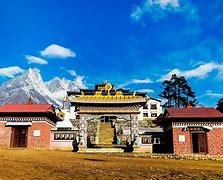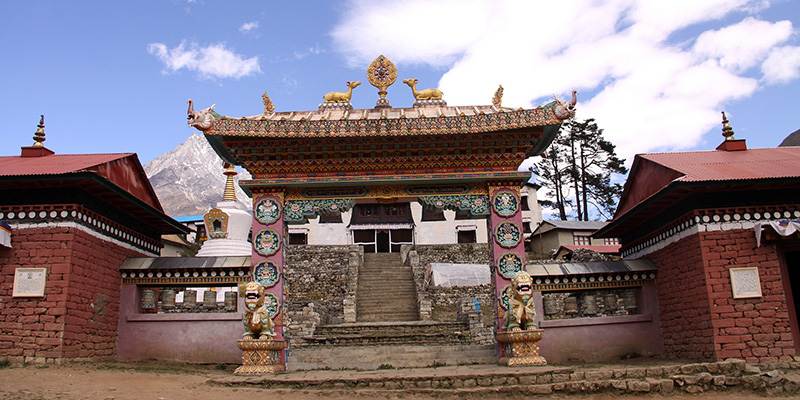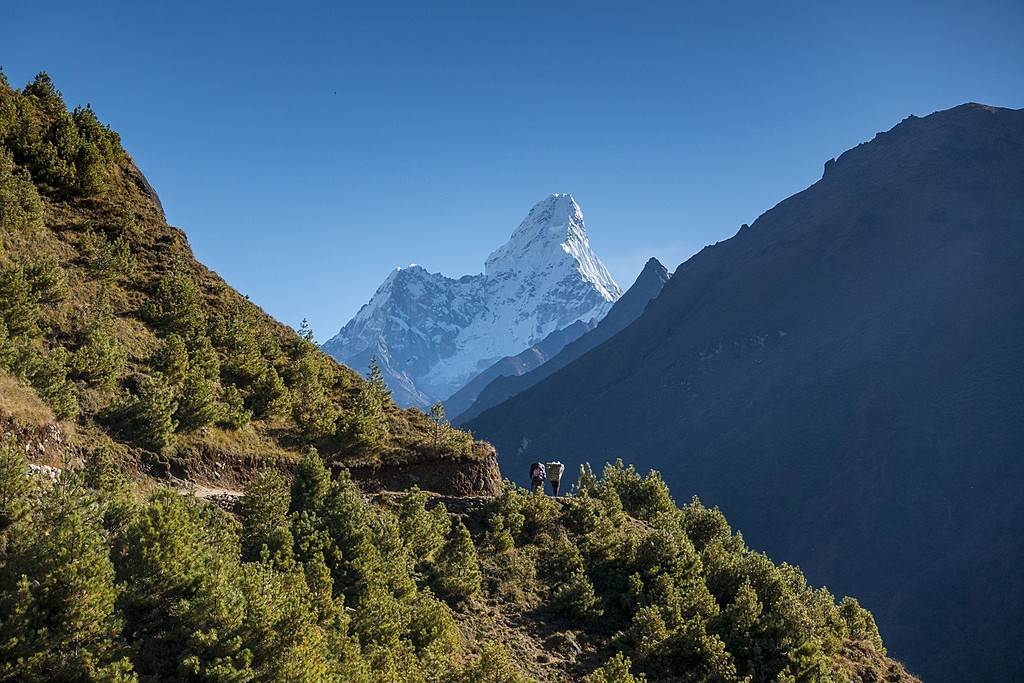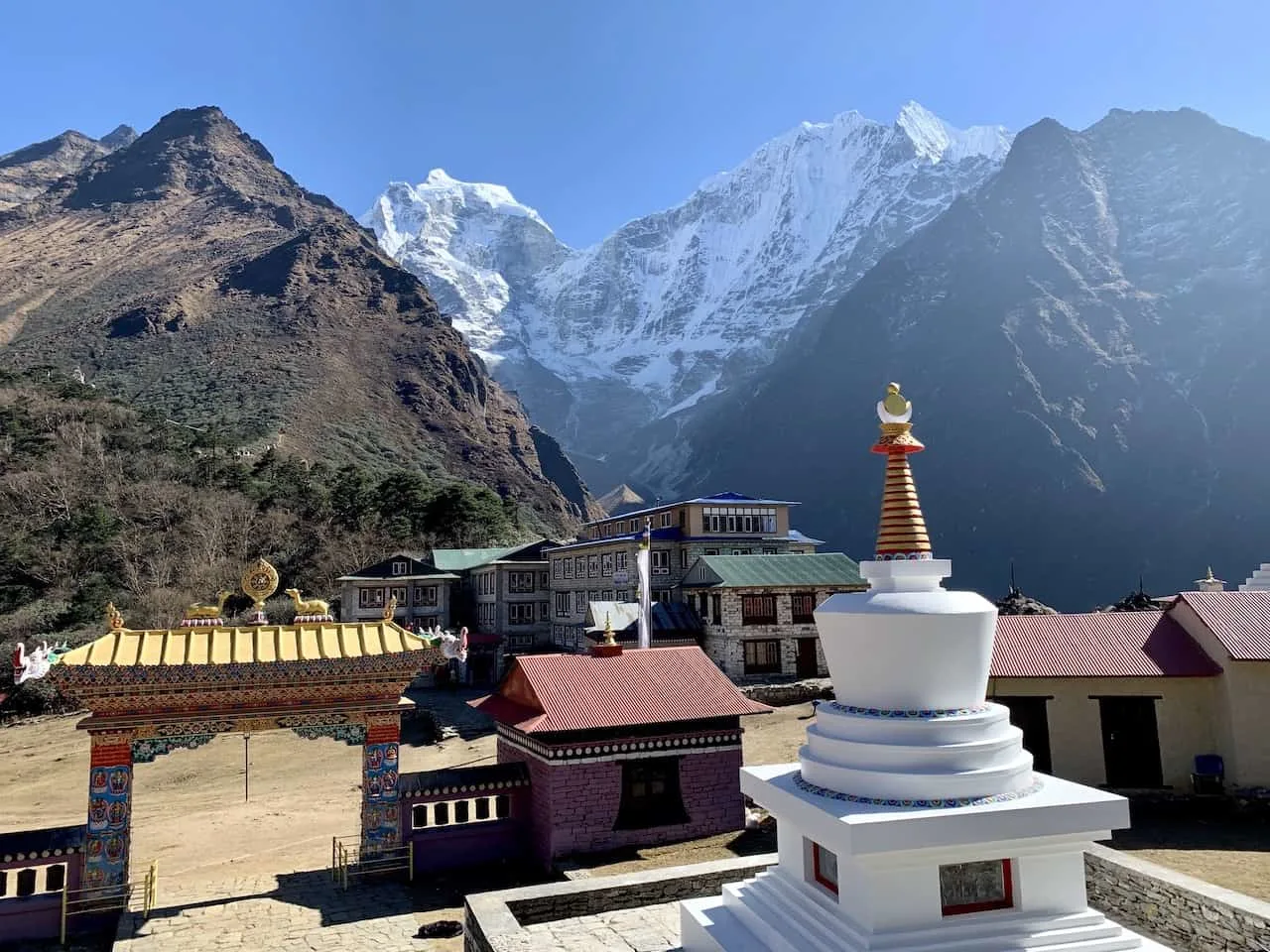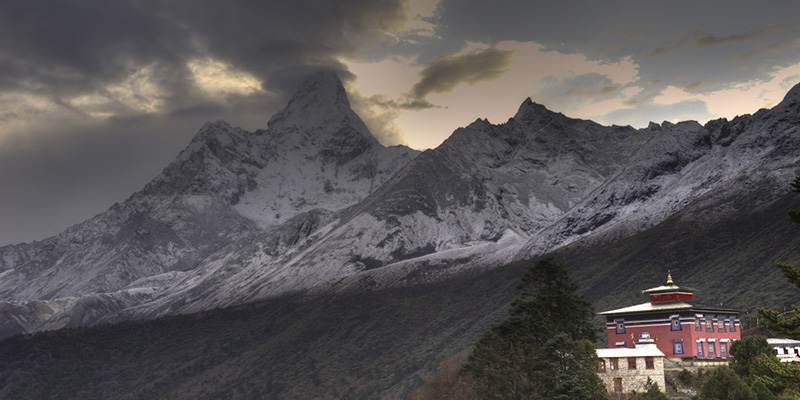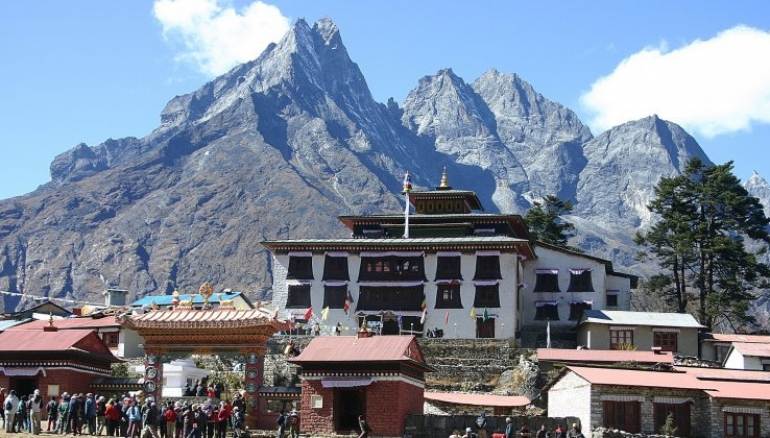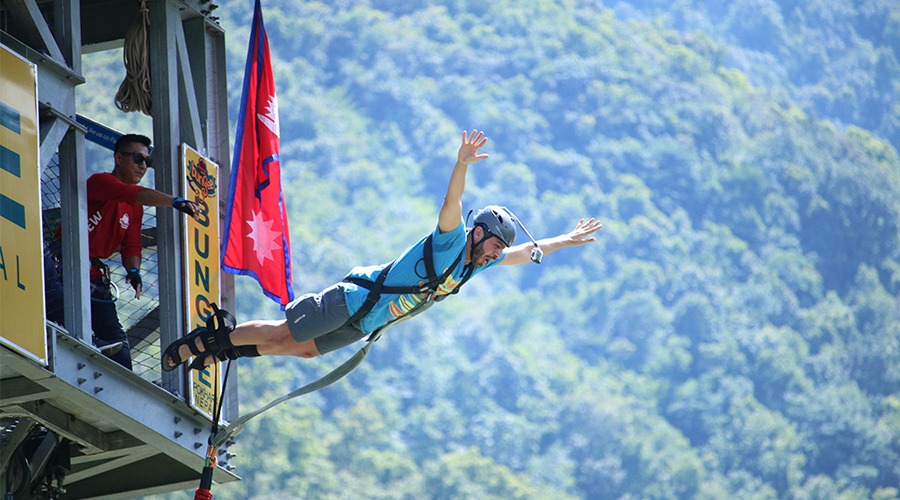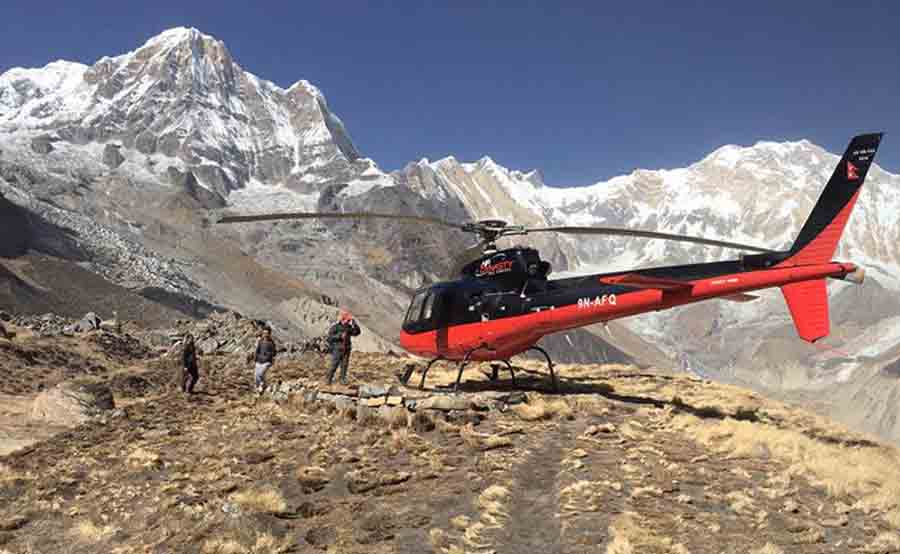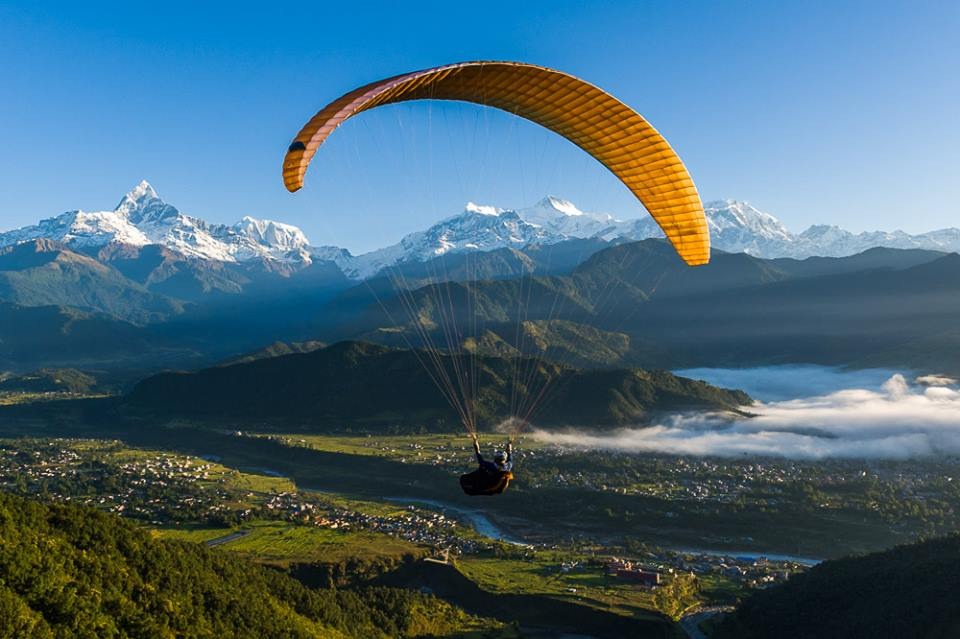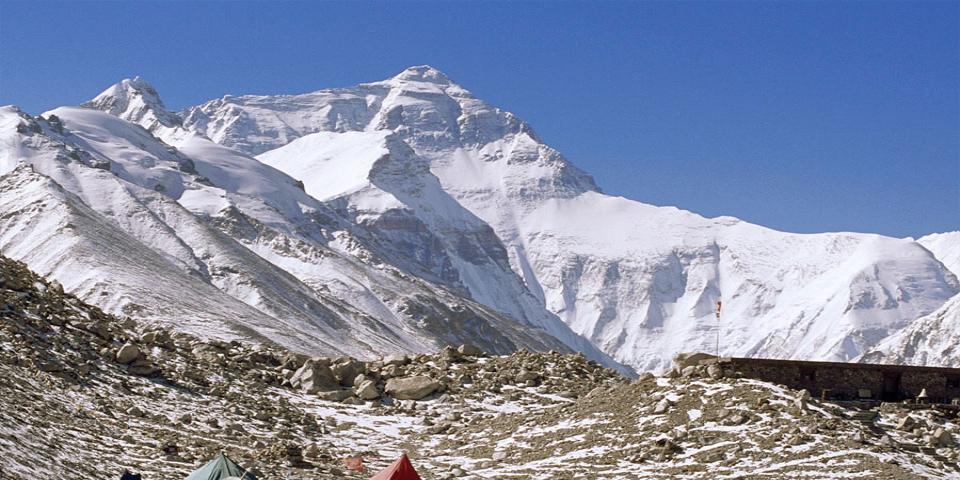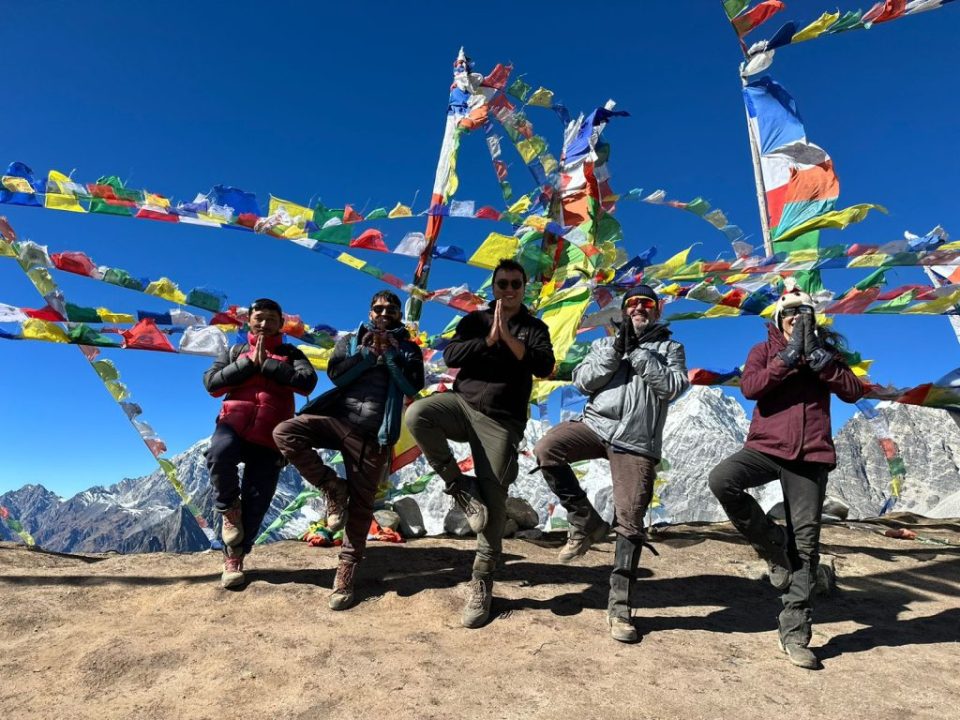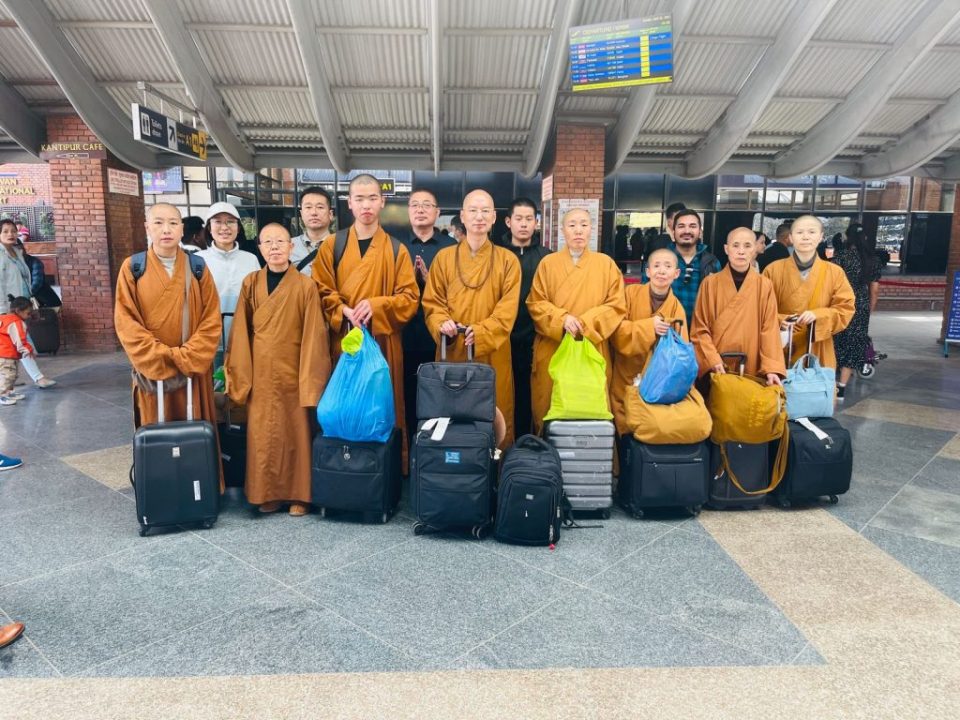Tengboche Monastery Trek
Trip Introduction
Due to its incomparable view of Mt. Ama Dablam at the back, Tengboche Monastery is one of Nepal’s most well-known monasteries, located at the highest altitude around the world. Tengboche monastery known as Dawa Choling Gompa is the largest and most important Buddhist center in the Khumbu region, with a live Rinpoche who blesses pilgrims, mountaineers, and visitors who pass through. After Namche, the most common night stop in Tengboche is perched on a hill across Imja Khola. The monastery is located across the valley from Khunde, on a high ridge. Tengboche is the 3,870-meter altitude above sea level, pretty top between rims of the forest and its facade with Ama Dablam. The Monastery was built in 1916 AD by Lama Gulu on-site hilltop of confluence Dudh Koshi Rivers.
The trek takes you through alpine forests and remarkable settlements, as well as along the glacier-fed Dudh Koshi and Bhote Koshi rivers, to Namche Bazaar, a market town that brings to mind red-cheeked Sherpa youngsters and generations of mountain expeditions from all over the world. The gateway of Sagarmatha National Park, which is home to the elusive snow leopard and red panda, is Namche. The World Wildlife Fund has designated this area as part of its Sacred Himalayan Landscape initiative.
With all of this natural beauty, it’s simple to see why the region’s largest monastery was established here. People have always been drawn to this location because of its natural and spiritual attractiveness. Our trip begins with a flight into Lukla. Then it’s on to Namche Bazaar, the world’s Sherpa capital, and the Tengboche Monastery. Trekkers might decide for a day journey to Khumjung’s remote Sherpa hamlet, where Sir Edmund Hillary constructed the area’s first school. It’s also ideal for trekkers who don’t have time for lengthier treks or who don’t want to go at much higher elevations.
Trip Facts
| Country | Nepal |
| Region | Everest Region |
| Duration | 10 Days |
| Activity | Trekking, Hiking |
| Grade | Moderate |
| Meals | Breakfast, Lunch, and Dinner |
| Accommodation | Hotel, Lodge |
| Maximum Altitude | 3870m/ 12696.85ft |
| Attraction | Namche Bazaar, Tengboche Monastery |
| Best season | Mar, Apr, May, Sept, Oct, Dec |
Trip Highlights
- Visit UNESCO world heritage site in Kathmandu – Bouddhanath, Swyambhu stupa, Pashupatinath, Kathmandu Durbar square.
- Scenic flight to Highest altitude airport- Tenzing Hillary Airport, Lukla.
- Experience the vast biodiversity of the Himalayas by hiking through the UNESCO world heritage site of the Sagarmatha National Park.
- View of snowcapped Mt. Everest, Mt. Lhotse, Mt. Ama Dablam from a close distance.
- Visit Namche Bazaar- the Sherpa Capital.
- Visit Tengboche Monastery- the largest Buddhist monastery in Khumbu Region.
- Discover the rich Sherpa heritage by visiting the Tengboche monastery’s monuments, relic statues, paintings, and scriptures.
- Tenzing Norgay, one of the first two mountaineers to reach the top of Mt. Everest, was born in Tengboche village.
- Enjoy the Everest region’s rich flora and fauna.
Is this trek appropriate for you?
- 10 days of trekking are included in this tour. You’ll be walking for 5 to 6 hours every day, reaching elevations of up to 3870 meters (12696.85 feet) at times. We cannot overstate the importance of being in excellent physical shape and health, which needs some light training before your trip to be prepared.
- This trek is for you if you’re seeking a demanding trekking adventure you are prepared through this trek. Prior high-altitude trekking experience is recommended but not required.
- The weather in the Himalayas can be unpredictable. Every year, many flights to or from Lukla are delayed or canceled because of weather conditions, so you should plan accordingly.
- The teahouses, or trekking lodges, where we stay on the trek are very basic, with just basic services.
Itinerary
| Days | Activities | Duration |
| 1. | Arrival in TIA Kathmandu | |
| 2. | Explore Kathmandu Valley (1,400m/ 4593.176ft) | |
| 3. | Flight from Kathmandu to Lukla and Trek to Phakding (2,610 m/ 8,563 ft) | 3-4 hrs |
| 4. | Trek from Phakding to Namche Bazaar (3,440 m/ 11,290 ft) | 5-6 hrs |
| 5. | Rest day in Namche Bazaar and Optional Day Hike (3,440 m/ 11,290 ft) | |
| 6. | Trek from Namche Bazaar to Tengboche (3,860 m/ 12,680 ft) | 5-6 hrs |
| 7. | Trek from Tengboche to Monjo (2,835m/ 9301ft) | 7-8 hrs |
| 8. | Trek from Monjo to Lukla (2,840m/9316ft) | 4-5 hrs |
| 9. | Flight from Lukla to Kathmandu (1,380 m / 4527 ft) | 30 min |
| 10. | Final Departure |
Itinerary
Departure from : Kathmandu, Nepal
Arrival On : Kathmandu, Nepal
Day 1
Arrival in TIA Kathmandu
The flight into Kathmandu Valley is breathtaking, with sights of the Himalayas and the terraced valley plain. One of our agents will meet you at Tribhuvan International Airport and take you to your hotel. Thamel, Nepal’s tourist center, is a good place to start your lunch, with a selection of eateries serving both Western and indigenous Nepali cuisine. You will have time to tour the city depending on your arrival time. The Durbar Square in Kathmandu, with its tiny streets filled with small stores, ancient temples, and local restaurants, is a famous tourist attraction. Dinner and overnight at the hotel.
Day 2
Explore Kathmandu Valley
Following breakfast, you have a variety of options for how to spend your day, considering the several notable landmarks in the Kathmandu Valley. You can either spend this day as a free day or hire a local English-speaking guide who knows the city well and can explain the history and significance of the sights while driving you about in a private car. You can visit the Swayambhunath Stupa, which is located on the city’s western edges on a mountaintop. While enjoying peace and harmony, the site gives a broad perspective of the entire city. Visit the Pashupatinath Temple, one of the holiest Hindu temples on the land. Pilgrims from all over the world will be seen arriving for rites. You might also go to Boudhanath, which is one of the world’s largest circular stupas and is located in the city’s northeast. Dinner and Overnight stay at a hotel.
Day 3
Flight from Kathmandu to Lukla and Trek to Phakding
After breakfast, take a 30-minute flight to Lukla, where you’ll land on a steep slope runway and begin your trek. On clear days, the flight will take you between mountains and into valleys, with spectacular views of the Himalayas. Today we’ll hike a short distance through local settlements, where we’ll likely come across other trekkers, people, and yaks with their tinkling bells. We’ll be walking for 3 to 4 hours and covering 8 kilometers. Continue on a well-marked trek through the Khumbu valley ‘s lush forest along the Dudh Koshi river. Spend the night in Phakding.
Day 4
Trek from Phakding to Namche Bazaar
After having breakfast, we’ll begin a hard and rocky trek towards Namche from Phakding. This is a difficult day since you’ll start to feel the effects of the altitude. The route also includes several high suspension bridges that must be crossed over the Dudh Kosi River. We will walk for 5-6 hours and cover 10.5 kilometers. We will depart Monjo towards Jorsale village for lunch. The settlements along the way are noted for their beehives and pine tree planting areas. When we get to Namche- the capital of Sherpa, check in into the accommodation. Get fresh up and explore the town. Overnight stay at the Lodge.
Day 5
Rest Day in Namche Bazaar and Optional Day Hike
Today is a relaxation day, so take advantage of it by sleeping in and relaxing in the morning. Namche, located between two ridges among the Khumbu’s huge peaks, is a great spot for acclimating to the increased altitude. You can carry your little bag to Namche Monastery and then go for a trek. You can also visit Sir Edmund Hillary’s Khunde Hospital or take a one-hour hike up to the Everest View Hotel above Namche for views of renowned peaks including Mt. Everest, Ama Dablam, Nuptse, Lhotse, Thamserku, Kantega, Tawoche. Explore around the café, restaurants, and gear shops in Namche.
Overnight stay at the Lodge.
Day 6
Trek from Namche Bazaar to Tengboche
After having breakfast, we will depart for Tengboche. Following the trail up the valley’s slope, high above the Dudh Kosi River. The gigantic peaks of Mount Everest, Lhotse, Nuptse, and Ama Dablam in the Khumbu region will be visible for the first time. Pass through multiple villages and a variety of tea stores before descending sharply to Phunki Tenga’s river bridge. You will walk for 5-6 hours and cover 9.2 kilometers. Although the next twisting trail is strenuous, you will be rewarded with beautiful scenery of rhododendron trees, colorful birds, and breathtaking mountain scenery.
Tengboche is the birthplace of mountaineer Tenzing Norgay Sherpa and also known for its historical Buddhist monastery, the largest in Khumbu region, and from where you’ll spend the night, you’ll have a beautiful view of Mount Everest, Lhotse, Nuptse, Ama Dablam, Tawache, Thamseerku. At evening visit the Tengboche largest monastery called Dawa Choling Gompa. It is a famous monastery among the Buddhist, Tibetans and trekkers in Everest region. If reached within 3pm you can get to experience the daily worship celebration by monks in Tengboche Monastery. During the end of October or early November month you can experience the 19 days long “Mani Rimdu” Festival in this monastery. It is the famous festival of religious rites, songs, dance, enactment of legends with vibrant color and noise where Monks dressed up in their religious attire and masks, and dance together. Sherpa from all over the region come in this monastery to witness and to participate in this festival. But only last 3 days of this festival are open for public.
Overnight stay at the Lodge.
Day 7
Trek from Tengboche to Monjo
After breakfast, start our trek. After descending to the Imjase River, climb steeply for nearly an hour to reach Sanasa. The twisting trail leads to Namche Bazaar from there. Lunch can be had in one of Namche’s finest restaurants. Before commencing your journey down to Monjo, do any last-minute shopping in Namche. You’ll be trekking for 8 to 9 hours and covering 16.4 kilometers. Monjo is a small town most known for being the national park’s checkpoint or entrance gate. Overnight stay at the Lodge.
Day 8
Trek from Monjo to Lukla
Begin the final day of the trek after breakfast in Monjo by following the Dudh Kosi river to Lukla. After walking from Monjo to Ghat and stopping for lunch. From Topdanda bid a final goodbye to the Mt. Everest. We’ll continue through villages like Chumoa, Benkar, Phakding, and Chuthawa, eventually arriving at the Pasang Lhamu Memorial Gate, which marks the end of the trek. We will walk for 5-6 hours and cover 9.5 kilometers. You will have arrived in the village of Lukla. Leave your bags at your lodge and go out into the streets to interact with the people. Have a wonderful evening in last day in Khumbu region with your team. Overnight stay at the Lodge.
Day 9
Flight from Lukla to Kathmandu
After breakfast in Lukla, you’ll fly back to Kathmandu early the next morning. You’ll be greeted at the airport and transferred to your hotel. You may spend the rest of the afternoon and evening at hotel or explore the streets and antique shops of Thamel. Kathmandu offers you a lot of activities to do and lots of place to visit. Evening has a farewell meal with your trekking groups. Overnight stay at the Lodge.
Day 10
Final Departure
Our agent will drive you to the international airport of Kathmandu 3 hours earlier than your flight time, as per your travel itinerary, and your tour will end here.
Route Map
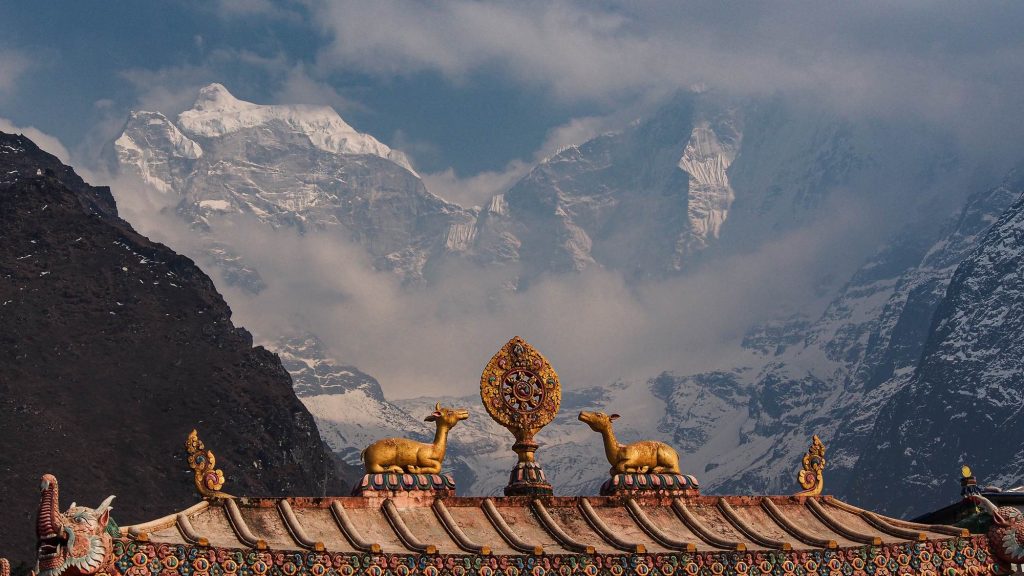
Altitude Map
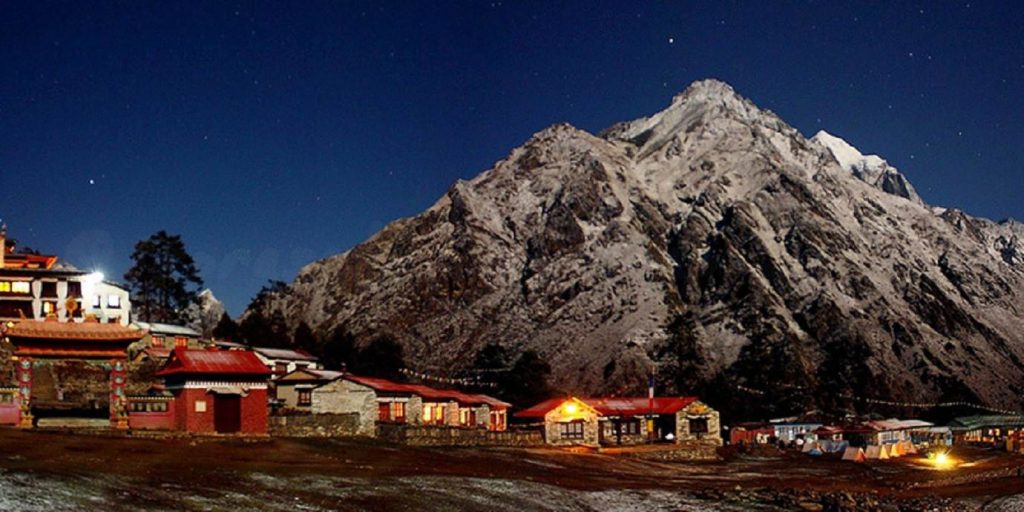
What's Included
- Arrival & Departure: Airport – Hotel transfer – Airport (Pick Up and Drop).
- Hotel Accommodation in Kathmandu: 2nights at Star categories hotel on twin sharing on bed and breakfast basis.
- Welcome Dinner and farewell dinner at Nepali culture restaurant in Kathmandu.
- Food & Lodging: 3 meals a day (BLD; including tea and coffee) along with accessible accommodation sharing at Hotel/Lodge/teahouse during the trek.
- Permit: All necessary paper works: Sagarmatha National Park permit & Khumbu Rural Municipality entry fee.
- All government and local taxes if necessary.
- Trekking Map: Everest Region Trekking map.
- Member transportation: – Air Transportation: (Domestic Flight) Fly from Kathmandu – Lukla and while returning Lukla.
- Insurance: Insurance for all involved Nepalese staff during the trek.
- Drinking water: 2 liters of boiled water to carry on thermos per day per member.
- Guide: Government licensed Guide (English speaking) during the trek.
- Porter: Porters (2 trekkers: 1 porter) up to 15kg during the trek.
- Comprehensive Medical kit.
What's Not Included
- Air Fare: International flight airfare (from and to Kathmandu).
- Nepal entry visa fee.
- Extra night in Kathmandu: Extra nights’ expenses in Kathmandu. In case of early arrival or late departure, early return from Trekking (due to any reason) than the scheduled itinerary.
- Personal Insurance: Travel and high-altitude insurance. *Mandatory
- Personal Expenses: Telephone calls, Internet, Toiletries, battery recharge, hot shower, laundry, soft drinks, beer, and any alcoholic beverages.
- Personal Equipment: Clothing, Packing Items or Bags, Personal Medical Kit, Personal Trekking equipment.
- Rescue Evacuation: Medical and emergency rescue evacuation costs if required. (Rescue, Repatriation, Helicopter, Medication, Medical Tests and Hospitalization costs).
Equipment List
What to bring ?
General
Tailor Your Holiday
Everyone has their own preferences in terms of destination, journey time, and budget. As a result, sticking to our plan isn't necessary. We will create a personalized itinerary for you that includes accommodations, transportation, meals, and tour guides. We guarantee you the best Tailor-made Package because this is your trip. You have the option to personalize it, as your liking. Let us Plan together to make your Vacation worth it.
Fixed Departure
Why Travel With Us?
Secure Online Payment, No Credit Card Fee
Travel with Locals. Support Locals
Lifetime Deposit
Private & Tailor-Made Trips
24/7 International Support
Support Local Communities & Donate to Charity
All Inclusive Price
Secure Online Payment, No Credit Card Fee
The ideal season to travel
January:
Nepal’s trekking off-season is in full effect in January, with low tourist numbers across the nation. The spectacular views and the fact that you’ll have the trails to yourself make this a surprisingly fantastic time to walk across the Gokyo Lake if you’re prepared for chilly temperatures.
February:
While much of Nepal remains freezing in early February, the temperature begins to rise later in the month. The mountains are still cold, and there will be snow, but winter is coming to an end. The average February temperature in Namche Bazaar (11,290 feet/3440 meters) is 43°F (6°C), which isn’t too cold but certainly not warm. Since winter is the off-season, finding a bed in the teahouses that are open throughout the Everest region should be simple.
March:
March marks the start of spring, one of Nepal’s two high seasons. While temperatures in the mountains will likely remain chilly, and snow will likely remain in certain areas, pathways will begin to soften. In March, trekkers returned in greater numbers, and there are numerous reasons for this. While March isn’t as crowded as April, the normal Everest Base Camp (EBC) route soon overflows during this season.
April:
April, as of March, is a popular trekking month in Nepal. The monsoon rains are still some weeks away, and temperatures are normally pleasant or at least not too chilly in the high Himalayas. In April, temperatures in the Himalayas are still cooler: 34°F (1°C) to 53°F (12°C) in Namche Bazaar (11,290 feet/3440 meters), an important destination on the EBC climb. At higher elevations, temperatures will be cooler.
May:
May marks the beginning of the Everest climbing season, as weather conditions on the mountain are most ideal at this time of year, although these conditions are very different from what normal trekkers will find at lower altitudes. Although the number of trekkers in Nepal decreases in May as humidity and temperatures rise in preparation for the monsoon season, the trail to EBC is an exception. During May -July you can see red, blue, purple, and yellow rhododendrons beyond the trek from Namche. For nature lover, May and June is the best time to trek.
June:
By mid-June, monsoon rains had arrived, and most trekkers had left the paths. The conclusion of the Everest-climbing season normally occurs in the first half of the month. However, even once the rains begin, it hardly ever rains all day every day, so if you’re prepared for rainy weather and understand that humidity and rain clouds may hamper your views, June isn’t a bad month to trek in the Everest Region. Furthermore, the higher you climb in height, the less probable it is that it will rain. The most important festival of Sherpas, “Dumji festival” falls during the end of June or early July.
July:
In July, Nepal’s high rainfall keeps most trekkers off the trails. However, individuals who are well-prepared with good rain gear and are willing to accept some potential travel delays can still enjoy their climb to Everest Base Camp. In July, the temperature in Namche Bazaar is pleasant, with an average high of 60°F (16°C). The further you travel into the mountains, the cooler it gets and the less rain you get, however, it will almost surely pour at lower elevations. There’s also a danger of mudslides and landslides disrupting hiking trails.
August:
The monsoon season in Nepal begins in mid-June and lasts until mid-September. In July and August, the Everest Region, like the rest of the country, receives the most yearly rainfall. It also has the hottest temperatures; while the high Himalaya is never ‘hot,’ normal highs in August in Namche Bazaar are around 60°F (16°C).
The higher you go into the mountains, the cooler it gets and the less rain there is. In August, there’s also a danger that landslides would close hiking routes and make paths muddy.
September:
By mid-to-late September, the monsoon rains will have passed, and the weather will be suitable for trekking in Nepal once more. Even though excessive humidity may hide some mountain views, there’s still a possibility to see amazing views early in the morning. In addition, in September, the popular Everest region trek is less crowded than later in the autumn season.
October:
The month of October is the busiest for trekkers in Nepal. The weather is quite stable, with a clean, rain-free sky providing superb mountain views. However, crowds are at an all-time high, with the Everest region Trek being the most popular in the country. When visiting the Everest region in October, it is critical to plan properly far ahead as possible. During the late October or early November, you can experience the 19-day long “Mani Rimdu” Festival in this monastery. It is the festival of religious rites, songs, dance, enactment of legends with vibrant color and noise where Monks dressed up in their religious attire, masks and dance together. Sherpa from all over the region come in this monastery to witness and to participate in this festival. But only last 3 days of this festival is open for public.
November:
In November, there is extremely little possibility of rain in the Everest region—it is the driest month of the year. This means that humidity is at an all-time low, and the chances of seeing clear mountain views are greater than at any other time of year. Temperatures are a few degrees lower than they were in October, with a low of 26°F (-3°C) in Namche Bazaar (11,290 feet/3440 meters) with a high of 48°F (9°C) on average. Temperatures will be even cooler at higher elevations. However, given the low chance of rain and clear skies, November is the greatest month of the year to hike to Everest in terms of weather.
December:
As winter approaches, the trekking trails become empty except for the most courageous adventurers. However, if you’re properly equipped for cold temperatures, December is a great season to walk to Everest Base Camp. The weather in December isn’t quite as freezing as it is in January, but the difference isn’t significant. This month, the average high in Namche Bazaar is 44°F (7°C), while the average low is 21°F (-6°C). Because Namche is only 11,290 feet (3,440 meters) above sea level, temperatures will be much cooler higher up.
Flight to Lukla
Almost every trip begins with a flight from Kathmandu to Tenzing Hillary Airport in Lukla, a small single-landing runway airport high in the Himalayas. As it is the easiest way for your trek to Tengboche monastery trek.
- Lukla Airport is also known as the most dangerous airport in the world. This airport, which is only open when the weather is calm, and visibility is excellent.
- It’s impossible to say whether your Lukla flight will be canceled. If this occurs, your trip may be extended by one or two days. So, plan and add buffer days to your itinerary to ensure you don’t miss your international flight.
- Flights to and from Lukla are currently operated from Manthali Airport in Ramechhap rush hours at Kathmandu Airport during the high season (spring and autumn). Kathmandu is 132 kilometers (4 hours and 30 minutes) away.
- Helicopters have a little more flexibility when it comes to arriving at Lukla and can frequently make the flight in weather or visibility that a small plane would not be able to make. It is sometimes doable to switch your flight to a helicopter, but this can be expensive and there is no guarantee that you will arrive on time.
Altitude sickness
Beyond 2500m (8000ft), Altitude sickness is a sneaky monster that may attack even the fittest trekkers. These demands do everything in your power to prepare for altitude trekking and take things carefully throughout your Everest region journey. With increasing altitude, the amount of available oxygen decreases, which is the primary cause of high-altitude sickness.
So, you may suffer from different altitude sicknesses beyond the altitude of 2500m i.e., Acute Mountain sickness (AMS), High pulmonary edema (HAPE), High-altitude cerebral edema.
Some of the symptoms of Altitude sickness are:
- Increased breathing.
- Increased urination.
- Restless sleep.
- Periodic breathing at night because of altitude.
- Dehydration.
- Shortness of breath.
- Extreme fatigue.
- Respiratory failure.
- Cerebral edema.
- Coma.
Certain care should be made to ensure that the situation does not worsen. However, if the symptoms worsen, you may need to return to a lower height and seek medical help. There are, however, several other precautions you may take while trekking in the Everest region to lessen your risk of altitude sickness.
- Trekkers can modify their bodies by walking and ascending gently, as our bodies need time to adjust to the level of oxygen. For high altitude trekking, at least one day of acclimatization rest is essential, and you should ascend as high as possible before returning to a lower altitude for the night.
- You should do various strength training exercises such as running, cycling, jogging, push-ups, and going to the gym to acquire strength and stamina for your adventure.
- As the air gets increasingly thin, an increase in elevation reduces oxygen levels, and in the Everest region trek, an increase in altitude also means less vegetation. The consumption of alcoholic beverages, cigarettes, and tobacco decreases the body’s water content.
- The greatest remedy is to always stay hydrated. On your walk, instead of drinking cooled water, drink warm water.
- Avoid sleeping pills to treat insomnia because they suppress breathing.
- Diamox is the most effective altitude sickness medication; thus, you should bring a subscription with you on the trek. However, you should consult with your physician to see whether it is advantageous.
Things to known before travelling to Everest region
Drinking-Water
Especially for trekkers, it is very necessary to hydrate your body at a higher altitude than in lower elevations to avoid dehydration and altitude sickness. Lack of fluid can be the main hindrance during the trek. You should hydrate your body with at least 3-4 liters of water daily (Tea, soup, or normal drinking water). Throughout the trek, you will come across tap and spring water, but it is not safe to drink without purifying it. You can buy the plastic bottle water in the teahouses but get expensive as you climb in the higher altitude, and it causes pollutes the local ecosystem, therefore we recommend you to use a Reusable water bottle or water pouch favorable for both hot and cold water.
During this trek, you may have to pay from 1$ to 5$ (at Gorakshep) for a sealed bottle of water. Here are some ways that you can use to make the water drinkable.
- Boiled water
Boiling water is the best way to purify the water. As we are climbing to a higher altitude you need to boil the water for about 3-minute and season it with a pinch of salt before drinking. You can get free cold water in the teahouse but for boiled water, it cost around 1-2$ per liter and 3$- 10$ for a large pot.
- Purification tablets or electrolyte powder.
Purification tablets like chlorine or iodine tablets are commonly used tablets by trekkers to disinfect the water. 1 tablet is enough for a liter of water. It takes around 30 min for the tablets to dissolve and become drinkable. Water, purified by tablets may leave a taste in your mouth.
Electrolyte powder is another option. Electrolyte powder is a better way to purify water than tablets because electrolyte powder contains minerals such as salt, Potassium, Magnesium, which are important for your body during the trek.
- UV Light water purifier/ SteriPEN.
It is a simple, effective, economic, and environment-friendly way to purify water. It kills the bacteria and virus within 10 sec by exposing them to ultraviolet light using Steripen, without changing the flavor of the water. This is a highly recommended method of purifying water.
Essential Backpack items for Tengboche Monastery Trek
The bag of a trekker also reveals the trekker’s level of experience. A good trekker should be a smart backpacker. You should be pre-prepared for the things that you need in the trek.
Here are some of the things that you need to take with you for the trek.
Travel documents
- Airline tickets with the itinerary.
- Travel insurance policy documents.
- Valid passport.
- Copies of passport.
- Passport-sized photos.
- Nepalese cash.
- Travel permits.
Clothing
- A pair of waterproof trekking shoes or hiking boots.
- A pair of flip flop slippers or running shoes.
- 2 sets of thermals (leggings and tops)
- 3-4 pairs of hiking long sleeve shirts or tops.
- Pairs of hiking shorts and pants.
- Fleece jumpers or a set of tracksuits.
- Good quality windproof down jacket.
- Lightweight waterproof rain jacket and pants.
- Neck gaiter, leg warmer, and packet of pocket hand warmers.
- 3-4 pairs of quick-dry socks, underwear, sports bra.
- Pair of inner and outer gloves.
- Knitted Hat, sun cap, beanie, or bandana.
- Glacier Sunglasses and eyeshade.
Trekking equipment
- Waterproof trekking bag of 40-50liter and Rucksack of duffel bag (if your backpack is not enough for all your item and need a potter).
- Reusable water bottle (both hot and cold) of at least 1-2litre.
- A sleeping bag and sleeping bag liner.
- Trekking stick/ poles.
- Crampons (if you are trekking in the Winter season, Jan-Feb)
- LED Headtorch or solar lamp (LuminAID lamp).
- Stuff sacks, plastic bags.
- Plug adapter, Charging appliances, power bank, batteries.
- Pocket knife.
- Travel Wallet.
Toiletries
- Rolls of Toilet paper, wet wipes, and tissue.
- Medium-sized quick-drying towel.
- Toothbrush and toothpaste.
- Hand sanitizer.
- Sunscreen, lip balm, body lotions.
- Deodorants.
- Portable mirror.
- Shampoo and soap.
Personal First Aid Kit
- Antibiotics
- Painkillers, Paracetamol, ibuprofen, aspirin, Nicole
- Sanitary pads
- Bandage.
- Anti-inflammatory spray.
- Anti-Nausea tablets.
- Anti-diarrhea pills or power.
- Altitude sickness tablets.
- Water purifying tablets or electrolyte powder.
- Mosquito and Insect Repellent.
- Salt or anti-leech oil (If traveling in the rainy season, July- Aug).
- Earplugs
You can buy or hire trekking clothes and equipment in Kathmandu. If you are buying it, you have to allow an extra day for shopping; however, if you are hiring it, you must inform us in advance so that we can arrange it before you arrive in Kathmandu. This way you can reduce the weight of your luggage and save time and money.
Branded trekking clothes and equipment are available around the Thamel area at a reasonable price.
Note– Kathmandu- Lukla flight has a luggage allowance of 15 – 20 kg per person. For extra baggage, they charge 2$ – 3$ per kg. So, you can wear your trekking boots and jacket to reduce the weight. Have a hand carry bag for your passport, money, medicine, and pair of clothing. You can leave some unnecessary items in the hotel in Kathmandu also.
Accommodation, Meal, and Transportation
Accommodation
We will accommodate in star hotel during our stay in Kathmandu. In Lukla, Phakding, Monjo, Namche Bazaar and Tengboche we will stay in lodges.
Meal
During the trek, we will provide you three-time meals. You can choose from the given menu.
Breakfast– French toast, Cornflakes, Cereal, Pancakes, Bread butter, Eggs, Oatmeal, Porridge, Tea, etc.
Lunch– Dal Bhat (Rice, vegetable curry, meat curry, Lentils, Tomato Chutney, Salad, Papad) Vegetable noodle soup, Chicken noodles soup, Garlic soup, Fried noodles, Fried rice, Thukpa, Fried potato, Mo: Mo, etc.
Dinner– Dal Bhat (Rice, vegetable curry, meat curry, Lentils, Tomato Chutney, Salad, Papad) Vegetable noodle soup, Chicken noodles soup, Garlic soup, Fried noodles, Fried rice, Thukpa, Fried potato, Mo: Mo, etc.
Besides these, there are a variety of other options of food. You can buy it from your pocket.
Transportation
By Bus- From Kathmandu airport to hotel at Kathmandu and vice-versa.
By Air- Flight to Nepal.
Flight from Kathmandu to Lukla and back.
A typical day on the Tengboche Monastery Trek
Every day your day will start with the sound of the 6 am alarm and knock on your door early morning from your guide with the invitation of breakfast. Get fresh up, have breakfast, pack your bag, and get ready to start the walk of that day by 7 am. We need to start our trek early to avoid the scorching sun as in midafternoon the wind gets stronger compared to morning in higher altitudes.
You’ll walk along the trail enjoying the scenery, clicking photos, creating memories, passing by other travelers, interacting with your guide, hearing each other’s stories. Lunch will be served at a local teahouse in the late afternoon (1-2 am). Having lunch and an hour of rest, we will proceed to the day’s final destination as per the itinerary.
On arrival at the destination, check into your accommodation. Get freshen up and some rest. As every teahouse where we stay has a large common dining area with a wood-burning stove in the center, there you will get to meet many travelers. You can sit there, laugh at each other stories, play cards, sing songs, play music, and have a good time. This will help you forget all the tiredness of the day. Later in the evening, you will have your dinner together. After dinner, your guide will give a short briefing about the next day’s trek regarding when you must get up when we have to start our trek the next day, where we will stay the next day, how many hours we have to walk, and so on.
You will walk for a minimum of 4hrs to a maximum of 8hrs a day. The trek to Tengboche is not difficult. During the acclimatization day, hike around the small peak or viewpoints. At night enjoy the view of sparkling stars floating in the clear sky above the cold wind. The panoramic view of Mount Everest, Lhotse, Nuptse, Ama Dablam, Tawache, Thamserku from Namche viewpoint, peaceful environment of Tengboche village, Architecture, statues, paintings, and scriptures of Tengboche monastery with stunning Mt. Ama Dablam at back are the highlights of this trek. Your hard walk will be paid off on reaching each destination with lifelong memories.
Nepal Tourist Visa and permits details
Visa procedure.
To travel to Nepal, you’ll need a tourist visa that is valid for the period of your stay in Nepal. Better, if you have a tourist visa valid for at least 2 months because anything can happen during the trip, and staying in Nepal after your visa expires would result in you paying a penalty. Apply for a visa at your nearest Embassy of Nepal or obtain an On-Arrival visa at immigration in Tribhuvan International Airport, Kathmandu. But it’s better to contact your nearest Nepalese Embassy.
Here are the documents that you need, to apply for the tourist visa.
- The Tourist Visa Application Form for Nepal (Fully completed online and printed)
- Original Passport with at least 2 blank pages and validity of at least 6 months.
- Photocopies of your passport’s information page.
- At least 2 recent passport-sized photos of yourself with white background.
- Proof of accommodation in Nepal.
- Valid travel and return flight tickets.
- A bank statement from the last 3 months with a minimum closing balance of NPR2,00,000.
- Receipt of the visa fee for Nepal.
Note: Our trip is for 10 days so apply for15 days visa that costs USD 30. But you can apply for 30 days tourist visa that costs USD 50.
Entry permits and Requirements
The Entry permits that you need for the trekking in the Everest region are;
| Trekking permits | Foreign Nationals | SAARC nationals | Nepali Citizens | |
| 1 | Khumbu Pasang Lhamu Rural Municipality Entrance Permit | NPR 2,000 per person (for the first 4 weeks)
NPR 2,500 per person (beyond 4 weeks) |
NPR 2,000 per person (for the first 4 weeks)
NPR 2,500 per person (beyond 4 weeks) |
NPR 2,000 per person (for the first 4 weeks)
NPR 2,500 per person (beyond 4 weeks) |
| 2 | Sagarmatha National Park Permit | NPR 3,000 per person per entry + 13% vat.
(Approx. 34$) |
NPR 1,500 per person per entry +13% vat
(Approx. 15$) |
NPR 100 per person per entry +13% vat
(Approx. 1$) |
Note A Khumbu Rural Municipality Entrance permit must be obtained from the Rural Municipality desk at the Lukla checkpoint.
Permits for the Sagarmatha National Park can be obtained from the Nepal Tourism Board, Bhirkuti Mandap, Kathmandu, and from the Sagarmatha National Park entrance gate at Monjo. To save time, we recommend that you obtain a Sagarmatha National Park Permit in Kathmandu.
For more information about Trekking Permit here is the link.
(If you are traveling from a travel/trekking agency your agency will arrange all the Permits.)
Documents required to get these Trekking permits.
- Complete the form with your passport details.
- 2 Passport size photo.
- 2 Photocopy of passport valid for at least 6 months.
For more information contact us.
Guide and Staff Arrangements
Throughout the trek, all your activities will be handled by our well-qualified and professional staff. We will do all the escorting. We are providing you with a highly experienced and licensed local Sherpa guide with fluent English speaking and has excellent communication skills. We will accompany you from Kathmandu and guide you to Tengboche Monastery. Each group of 4-5 trekkers will be assigned an assistant guide, as well as a porter for two trekkers (2*15kg =30kg). If your luggage weighs more than 15kg you will be provided a porter individually but you will be charged for 2 people.
All our lead guides, assistant guides, and potters are well professional and experienced. So, we hope for your respect and cooperation with us throughout the trek.
Travel Insurance
Trekking in Nepal is not less than an adventurous and occasionally dangerous activity, especially at high altitudes. Trekkers must have travel insurance before visiting Nepal for trekking. During these 10 days trip to Tengboche Monastery, you might come across some physical injury, illness, sudden accident during the trek and all the medical expenses and loss has to be borne by yourselves.
So, you need to have travel insurance that will cover all your risk up to the altitude of 3870 m (Tengboche).
Choose an insurance policy that covers all of your possible risks from the start of your journey to your final destination. The following threats should be covered by your travel insurance:
- Cancellation of Domestic and International flights.
- Lost and stolen baggage and passport.
- Hospital and Medical expenses (physical injury, Acute Mountain sickness, Altitude sickness, sudden accident)
- Emergency rescue such as Helicopter.
- All high-altitude trek dangers up to 4,000m.
You need to choose your travel insurance wisely so that, in the case of such an incident, your travel insurance will cover the costs.
You can get your travel insurance in either your home country of Nepal.
Responsible Travel
Everest region is not only the gateway to Mount Everest but is also the homeland of Sherpa. Besides being called the mountainous region, the Everest region is also known for the Sherpa’s traditions, cultures, Tibetan culture, and eco-friendly environment. All travelers should travel responsibly in these regions. Majority of People in the Everest region practice Buddhism and Tibetan culture.
You have to respect the local people, their culture, religion and try to limit any negative activities that will impact their local culture and environment. You can learn some Nepali greetings words to greet them respectfully. We expect you to dispose of the plastic garbage (food wrappers, plastic water bottles) properly. You might encounter many rare species (Lophophorus, Musk Deer, Himalayan Tahr, Blood Pleasant, Himalayan Monals, Martens, Tibetan Snowcock, Golden Eagle, and some others) during the trek, you rather not disturbed them. Tengboche monastery is the largest Buddhist monastery in the Khumbu region. This monastery has big religious and spiritual importance in Buddhism religion. While visiting the Tengboche monastery you have to follow the rules of the monastery. Ask for permission before entering and to click photos in any monasteries.
Your responsible travel will help Nepal achieve long-term sustainable tourism.
Tengboche Monastery Trek
Trip Reviews
Lorem ipsum dolor sit amet, consectetur adipisicing elit, sed do eiusmod tempor


